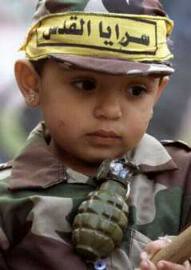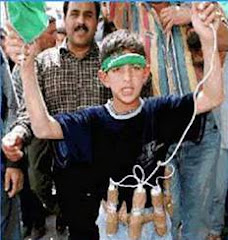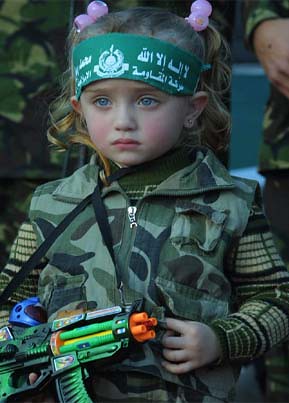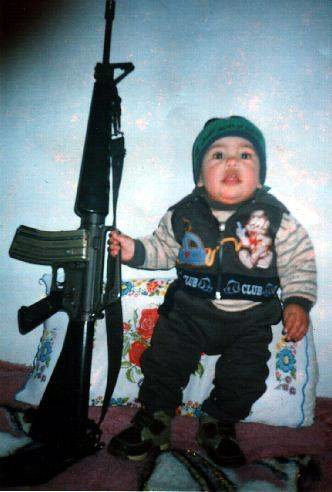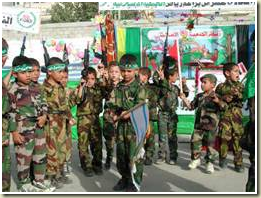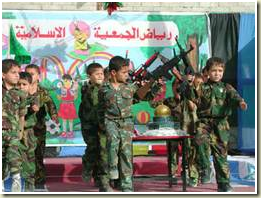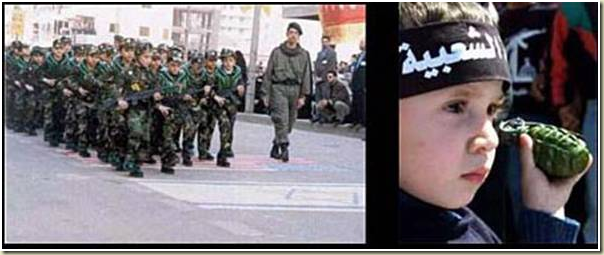Analysis of a (Real) Spy Movie
Let me preface this analysis with two preliminary points.
First, anybody who knows me knows that I read lots and lots of espionage novels (and even some intelligence and espionage-related non-fiction). Just take a look at my LibraryThing catalog and you’ll see that a large proportion of my reading is in the area of espionage fiction (and a favorite series by Daniel Silva involves Israeli assassin Gabriel Allon). And that’s been the case since my early teens. Thus, I think that it’s fair to say that I’ve read a lot of espionage novels (not to mention seen quite a few movies, too) and have, over the years, built up a casual knowledgebase (though no actual experience). For that matter, I’ve also tried my hand at writing espionage fiction (though with the exception of a short story written in college, most of my efforts have bogged down, much to my own disappointment).
Second, I’m a student of the Israeli-Palestinian conflict. In college, I studied extensively in the area (including writing my senior thesis on “Use of Israel as a Policy Surrogate for US Actions”; I got a very good grade from a very pro-Palestinian professor). In addition to the espionage books that I read, I also read a fair number of history or political science books on Israel and the conflict, and a far, far larger set of scholarly (and not-so-scholarly) articles on the subject. I’ve also used this blog to write quite a bit about Israel and the Israel-Palestinian conflict. So, here too, I think that I can legitimately claim to have at least a decent working understanding of the issues, the players, and the objectives.
Anyway, by now you’ve probably seen (or at least heard about) the video posted by police authorities in Dubai that claims to show an 11-member assassination squad stalking and eventually killing Mahmoud al-Mabhouh, a high-ranking member of Hamas, who had traveled to Dubai (on a false passport) allegedly to purchase arms from Iran. As I watched the video I thought back to my understanding of how operations like this are or should probably be carried out. I also thought about what the respective players had to gain from this particular assassination carried out in this particular way.
So get yourself some popcorn and watch the video (be aware that the video is 27 minutes; that’s why I suggested the popcorn). If nothing else, it is entertaining. As you watch, see if anything strikes you as odd or if there are any issues that you think are left curiously unresolved. Come back when you’re done and I’ll walk through an analysis of some of the more interesting parts of the video. [Update 2/24/2010: The video link from Gulf News TV that was embedded below and all across the web has, without apparent explanation, been shortened from 27 minutes to 1:46; it now consists just of a few “highlights”. I’m trying to find a new link to the full video. In the meantime, it may be worth asking why the full video has disappeared, especially given the attention that the original video and the assassination have garnered.]
Are you back? Good. Did you “enjoy” the video? Any quick thoughts on whether you agree with the analysis of Dubai’s police authorities? Any problems jump out at you?
One more thing before I jump into the analysis itself. Do I feel bad for al-Mabhouh? Nope. He was a known and wanted terrorist. If you play in that particular sand box, you should pretty much know that those whose wives and kids you try to kill probably don’t think real highly of you and might kick a little sand your way. Do I think that this kind of assassination is wrong? Again, nope. A clinical and clean operation like this is much better than dropping a bomb on al-Mabhouh’s house and risking harm to innocent civilians. Targeted assassinations have their place.
With that all having been said, let’s look at the video:
0:10: It is worth noting right away that the video uses the word “murder” throughout. Later in the video, we are told that there is “proof” that al-Mabhouh was murdered and did not die naturally (as was initially reported). However, that proof is not clearly identified (at least not in the video; other sources have since had more to say). Moreover, to the extent that al-Mabhouh was, in fact, a terrorist (or member of a terrorist organization), then might it not be more accurate to describe his death as a “killing” (in the military sense of the word) rather than ”murder”? If a solider shoots at another soldier and kills him, is that a murder? So if an intelligence organization (and we’ll presume for the moment that the “killers” are from an intelligence organization) kills a terrorist who is trying to buy arms to kill civilians, then why should that death be “worse” than the soldier killed in combat?
0:28: At least the Dubai police acknowledge that al-Mabhouh was a “senior Hamas military commander” and a founder of the al-Qassam Brigades (the charming chaps who launch rockets from Gaza into southern Israel). The claim is also made that there were failed attempts to assassinate al-Mabhouh in the past and the clear inference, without it being said outright, is that Israel was responsible for these failed attempts. Apparently, this information comes from al-Mabhouh himself in an interview with al-Jazeera (and if a terrorist said it, then it must be true, right…), though one wonders how exactly al-Mabhouh knew that it was Israel that had tried to kill him.
0:42: While the film does show quite a few interesting things, it is permeated with conjecture. For example, we are told that the “murder was carried out by a professional team that is highly skilled in these kinds of operations”. The basis for this allegation is the “fact” that “there were no traces left behind that could help uncover their identities”. Um, really? First, didn’t we just watch 27 minutes of video where we can see the faces of the members of this “highly skilled” team? And didn’t the Dubai authorities manage to track down their respective passports quite quickly? You’d think (and I’ll come back to this theme regularly) that if these assassins were so good at their job, that the Dubai police would never have been able to pick them out from the crowd in the first place. Plus, it is worth noting that just because a group is able to successfully accomplish a complicated plan, doesn’t necessarily mean that the group is either professional or highly skilled. All it means is that the plan worked.
0:50: We’re told the team used “special communications devices”. Like, what? Cellphones? Walkie talkies? How do the Dubai police know that the “devices” were in any way special and not just toys from Radio Shack? The fact that this claim is made repeatedly seems designed to lend credence to the “highly skilled” and “professional” allegation at the heart of the analysis of the Dubai police.
1:06: Remember about 20 seconds ago when we were told that the “professional team” that was “highly skilled” left no traces? Then how is it that Dubai’s police were able to “track the killers and identify them within 24 hours” (emphasis added)? That seems to call into question that whole “professional” and “highly skilled” allegation, not to mention the claim that no traces were left. Note too that this is being referred to as a “crime”.
2:00: Have you ever read any kind of espionage novel written in the last 10 years or so? One thing that you will almost always read about is the efforts that the protagonists (or antagonists, as the case may be) go through not to have their faces visible on cameras. They will wear a hat, or turn their head slightly, or raise a hand to cover a “cough” or raise a newspaper in front of their face; anything to avoid having their face clearly seen on camera (but while still managing to look natural). Watch Michael (or is it James?) right at the 2:00 mark. He almost looks right at the camera; he certainly does nothing to avoid the camera. Ah, but maybe he didn’t know the camera was there, you say. Well, if this team was as “professional” and “highly skilled” as Dubai wants us to think they were, then shouldn’t they have known where the cameras were? If they were so professional “in these kinds of operations” don’t you suppose that they would have done a “dry run” to try to learn about the type of security (including cameras) that would need to be avoided? It seems to me that one of the distinctions between highly skilled and … um … amateurish? … is the advanced knowledge and planning put into the operation to be sure that simple mistakes like being seen by a camera are minimized.
2:03: Gail allows her face to be clearly seen by the video camera at the airport not once but twice.
2:12: Michael and James again allow their faces to be seen by the video camera. They make small efforts not to look right at the camera, but it would have been easy for them to simply turn their backs to the camera so as not to be so easily seen. I don’t suppose that some of the members of this team actually want to be identified, do they?
2:33: It would have been hard for Gail to do a better job of looking at the camera without being obvious about it. So, at 2:38, she does it again, just in case.
3:01: What made the phone calls “suspicious”? The mere fact that they went to Austria? Note that Dubai’s police only speculate as to what those numbers were. Given the other detail presented, it seems somewhat strange that no more information about those telephone numbers was readily available. In addition, if the team were so “professional” and “highly skilled” why would they make numerous calls to different numbers in the same country? If it was to some kind of command center, couldn’t the destination of those calls be traced? Wouldn’t it make more sense for the calls to have been placed to vastly different destinations from which they were routed to their actual destinations? Dubai’s police also tell us that it is “probable that highly encrypted systems were used to communicate” but no explanation regarding this statement of probability is provided. I wonder if this statement was designed simply to make us wonder about the ability of Dubai’s police to monitory regular communications in the emirate.
3:19: This is the first time that we’re shown Gail’s passport photo. Does that look like Gail to you?
3:55: When Peter arrives, we’re told he is carrying a “suspicious bag”. What about the bag was suspicious?
4:33: We’re shown Peter returning to the airport and we’re told that he “meets with a team member”. Look closely at what you see on the video. Peter indeed returns to the airport (though it is impossible to read the time stamp to know for sure that this clip of Peter in the airport indeed follows the previous clip). But note that at 4:41 (when we first see Peter again) he appears to be reading a piece of paper in his hand and the other man (identified simply as a “team member”) seems to stop and point at the paper. I suppose that one interpretation of this could be that Peter met with a team member; then again, it is just as likely that Peter was looking at the paper for information about, say maybe, the name of his hotel, and a helpful passerby stopped to aid Peter. Who knows? But it is important not to read operational activities into every single movement of every single person, especially as that can lead to snaring people who may not even be related to the operation. Does is seem likely that two operatives would meet in plain view of a camera, especially a rotating camera that would have missed their meeting had they waited just a few seconds more (unless that is they wanted to be seen together)? It is also worth noting that we’re next told that the suspects left in different directions; wouldn’t that also be consistent with unrelated people leaving the airport?
5:11: Here we see a photo of Peter entering a hotel. One thing jumped out at me in this photo. Notice that sweater tied around his shoulders? I went back and looked at the video of Peter in the airport where he is also wearing the sweater. If an agent was trying to look inconspicuous, would tying a brown sweater around a white shirt in a desert country accomplish that goal? In fact, Peter’s outfit makes it quite easy to spot him. I wonder why? At least he appears to look a little bit away from the camera as he enters the hotel (and at 5:24 he does a good job of looking down as the camera takes his picture).
5:28: Next we see Peter leaving the hotel and going shopping. Boy that striped shirt is inconspicuous, too. I will say that Peter does a pretty good job of keeping his face away from the cameras.
5:48: “Three suspects” arrive at the shopping center. I do find it interesting that some of the subjects are named (and later 11 passport photos are shown) but several times we’re simply referred to subjects. How do they link these random people to the 11 passports? And note that none of the 3 seems to do anything to avoid the camera, especially the “suspect” on the right in the blue shirt who almost looks right at the camera.
5:53: Next Kevin and Gail arrive at the shopping center. This seems like a good place for another quick aside: Would you have been able to identify that woman as Gail if you hadn’t been told it was her? She seems to be wearing a scarf (as Gail was when she checked into the hotel) but her pants are now white, her hair is now loose, and it appears lighter (maybe). The real issue to take note of is the quality (or lack thereof) of the facial recognition software being used by the Dubai police. Clearly the police could not (certainly not in 24 hours, and probably not even in a month) have looked at every second of every piece of CCTV (closed circuit TV) footage from throughout Dubai. So either the police had information of which camera feeds to look at or relied upon facial recognition software to help identify suspects on different video feeds. Of course the question then becomes how good that software is and how many false positives (or negatives) are generated? Is that really Gail? Who knows?
6:01: Gail leaves the shopping center. Again, is that Gail? How do we know? We don’t see her face. And to me it looks like her hair is slightly different again and the color of her top seems to have shifted slightly (though her purse looks like it might be the same). Maybe it’s just the light; maybe that isn’t Gail at all.
6:10: Kevin leaves with a suspect. But all we really see is two men leaving the shopping center at the same time. Are they together? And is the fact that the guy in the blue shirt leaves at the same time as Kevin the reason he was targeted as a suspect in the first place? If so, doesn’t that call into question whether the two men he walked in with are actually suspects themselves? Note that the video clip stops before we see where Kevin and the other man go. Do they both get in that cab? Do they walk different directions? We’re not shown that piece of information.
6:15: Two suspects leave. I note that when these two leave, we do see their faces, but we didn’t see the faces of Gail, Kevin, or Mr. Blue Shirt. Whys is that? One more question: Why did five alleged suspects go to the mall? Remember, they supposedly have “special communications devices” that are probably “highly encrypted”; so why would they need to meet up in the first place? Unless, of course, the goal was to be seen together.
6:23: When Kevin checks out of the hotel, note the inconspicuous shopping bag that he carries. Yep, if I’m off to do dirty spy stuff, I’d carry around a big white shopping bag with a bright stripe on the side. One other thing to take note of and this is a pretty good time to do so. We see quite a lot of interaction between the “suspects” and hotel staff members. What language did the suspects speak? Did they have accents? Those seem like pretty important bits of information and nothing is said about any of that. Hmm.
6:52: We’re shown “before and after” photos of Kevin. Is the dark-haired man actually Kevin? It’s hard to tell. I mean a light blue shirt and blue blazer are pretty unusual clothing choices, right? How many of you reading this have a blue shirt and a blue blazer? If Kevin really wanted to change his appearance, don’t you think it likely that he’d change shirts? Or lose the jacket (or even have a reversible jacket)? Is this “disguise” really the best these “highly skilled” “professionals” can do?
6:58: At least these guys manage to avoid looking right at the camera.
7:15: “Two of the suspects” … again with the unnamed suspects whose faces we can’t see. But hey, they did walk into a hotel that Kevin walked into, right? I mean, that is suspicious…
7:18: This is one of those little jumps in logic that we’re expected to simply accept: “A suspect from the surveillance team [how do they know he’s a suspect or part of the surveillance team] arrives at another location [um, isn’t this the same guy that just walked into the hotel that Kevin walked into? same blue hat…] anticipating the arrival of the victim [note: not terrorist, but “victim”], as he was known to frequent this hotel [how and why was he known to frequent this hotel; for that matter, why was Dubai allowing a known terrorist to “frequent” anywhere in Dubai?]. He leaves after it is confirmed to him that the victim has checked into another hotel.” OK, wait one minute. How do the Dubai police know that he left “after it is confirmed”? And how do they even know that “it is confirmed” in the first place? This is one of those places where Dubai’s police have made guesses — perhaps educated and perhaps correct — but guesses nevertheless for which no evidence is offered.
7:55: Now this is interesting. Gail checks out of her hotel room. OK. But note that her hair has now been pulled back again and she’s apparently changed from the brown top and white pants she wore to the mall back to the pantsuit that she wore when she arrived. Odd? It also seems like somewhat unusual behavior for people to be checking in and out of hotels so quickly. That seems like the kind of thing that authorities might actually be monitoring (especially for foreigners who have to show their passports).
8:05: Another of those mysterious, unnamed suspects whose face is not seen.
8:08: Peter arrives in a rented car with a driver. First, why hire a driver? Doesn’t that add another person with whom the operative would have come in contact with? Did the Dubai police interview the driver? What did he tell them about Peter?
8:30: Let’s go with the presumption that this is a surveillance team at the airport. But if my job is to surveil, shouldn’t I be inconspicuous instead of wearing a colorful shirt and (at 8:48) kicking my legs in a way bound to draw attention to me? This guy couldn’t possibly be just another bored person waiting at an airport…?
9:15: Gail’s “disguise” is even worse than Kevin’s. All she did was put on a black wig. Same clothing, same bags. Ooh, I’m so confused. Go read an espionage novel. Read about agents doing all sorts of subtle things to change appearance (from cotton in their gums, to slightly different walks, to holding their shoulders differently, and the list goes on). And if the Dubai police were able to figure out these disguises so quickly, one might wonder what the point of the disguise was in the first place. And why is it that only Kevin and Gail use disguises?
10:00: This is one of the more interesting segments of the film and one of the few that really does look like surveillance of al-Mabhouh. It is hard to identify any other purpose for what these two tennis players are doing wandering around the second floor elevator lobby. But note that at 10:30 we can only presume that the blue-shirted tennis player walked past al-Mabhouh’s room to try to find the room number. That seems like a good guess, but still. The Dubai police have interestingly not told us that these two tennis players were staying in another hotel or another floor of this hotel. If they were staying at this hotel (especially on the second floor), might the entire sequence here be viewed differently? And note that the video skips when blue-shirt he walks out of sight. How long was he gone? You’re analysis might be different depending on whether he spent 10 seconds or 10 minutes further down that hallway. How long does white-shirt spend in the elevator lobby waiting for blue-shirt to return?
10:36: The surveillance team uses “special communications devices”. OK, first, what makes the device special? To me, presuming white-shirt guy is holding a communications device, it looks like a light-colored cell phone. Or maybe it was an asthma inhaler. It looked like he held it up to his face, not his ear. Maybe. And if he is a “highly skilled” “professional” why would he ever use that “special communications device” in any place where it could be seen on video?
11:15: Wait a minute! Are the tennis courts or athletic facilities on the same floor as al-Mabhouh’s room? Did the Dubai police do an investigation of whether white-shirt and blue-shirt played tennis at the hotel or whether they had even reserved a court? Again, those are the kinds of little facts that a “highly skilled” team would have thought through and which a thorough investigation would have examined.
11:18: “The room number and the one opposite is communicated to the rest of the team.” And we know this how? I thought that it was probable that those special communications devices were highly encrypted.
11:25: OK. So blue-shirt hangs out while white shirt goes outside and back in. Once again, look how inconspicuous that blue shirt is (not to mention the really ugly socks).
11:42: Um. If this is a surveillance team, why are they leaving?
12:39: Peter makes some phone calls from a hotel business center. I’m having a bit of trouble with this one. First, why use a hotel business center? If any phone is likely to be bugged by Dubai’s police, I’d rank that one pretty high on the list. And why use the same phone to make two calls that can then obviously be linked together? And what happened to throw away cellphones or those special communications devices? Furthermore, does anybody else find it odd that with CCTV virtually everywhere, there doesn’t appear to be a camera in the business center? Finally, I note (from the time stamp in the bottom left) that it only took Peter 8 minutes to make a hotel reservation (for a specific room; how did the team know it would be unoccupied?) and airline reservations including a stop. Have you ever tried to make a hotel reservation by phone? How about an airline reservation? How long did it take? 8 minutes for both?
13:04: I can’t think of a more inconspicuous set of outfits for a surveillance team to wear when standing around a luxury hotel lobby. That bright blue shirt and bright red shirt with great big bags would never be noticed by anybody. One of the basic concepts is to blend in, but it’s more than just blending in. The agent has to be so plain looking that if you were to see him (or her) now and again in 15 minutes, you wouldn’t recognize that you’d seen the person before. Now, would you recall seeing two guys hanging out in bright blue and bright red shirts?
13:45: Here is one of the most interesting (though very subtle) moments in the entire video. Kevin gets into a taxi. OK. Fine. But look at the guy who walks out of the hotel behind Kevin (in a black jacket and blue shirt). Why is his face blurred? The face of the doorman isn’t blurred. We’ve seen lots of “man on the street faces” so far, but why is this particular guy’s face blurred? As Arsenio used to say, “Hmm”.
13:48: Gail leaves with the “other suspects”. Are we convinced that these “other suspects” are people that we’ve seen before?
14:29: “The description of the victim’s car is communicated to the rest of the team.” Again, we know this how? First, there is nothing in the video to indicate time so we have no idea how long after al-Mabhouh left the hotel that red-shirt walked out the front door. Yes, red-shirt uses a cellphone (what happened to the special devices?), but in and of itself, I don’t think that tells us much.
14:36: We’re told that red-shirt “returns to his original position”. Again, how do we know? What was his “original position”? How do we know that is where he went? At least he does a decent job of keeping his hat low enough to obscure his face.
15:22: So how did the team make sure that the room opposite al-Mabhouh’s would be vacant? And would anybody really be so bold as to make a request for a particular, apparently non-descript, room? Wouldn’t that set of all sorts of red flags? “Um, gee, Mr. X, why is it that you want room 237”? And what would have happened if that room was occupied?
15:36: We’re told that Peter gives the room key to Kevin. But we don’t actually see this, do we?
15:54: Gail arrives with two big (inconspicuous) shopping bags. But she didn’t appear to have those bags when she got in the cab at 13:48. So are we sure these are the same person?
16:21: A “suspect” walks into the hotel with a blue hat. We’re told that he goes up to the room wearing a wig. On what basis do we know that he’s wearing a wig? Are we even sure it’s the same guy?
16:50: Gail leaves the hotel. OK, I can see that. But we’re told that she leaves to deliver bags to other team members in the parking lot. Again, we know this how? All we see is that she walks down the sidewalk and then returns without the bags. Sure, it’s a good presumption, but without additional video I’m not quite sure that all other possibilities are eliminated.
17:23: Oooh, the first “execution team”. You know the question to ask. By the way, note how casual these guys look but they do seem careful to keep their heads turned away from the camera.
17:45: Here’s team two! Again, watch how they keep their faces away from the camera (one guy even raises his hand to briefly cover his face). They look a lot more professional that the rest of the “highly skilled” team.
18:05: A new surveillance team arrives. One thing interesting about this is the fact that one member of this team appears to be a woman, yet the passports and information released by Dubai keep referring to an eleven member team with one woman. She manages to keep well hidden with that hat, but her “partner” is quite recognizable.
18:26: Those special communications devices are back. Do you see anything special? Go back and look in the woman’s hand when she walks through the revolving door. There’s something right there in her palm. Would she really hold her special communications device that obviously? And when the camera zooms in on her a few moments later, all I see is a woman on a cellphone who then adjusts her shirt or bra while her partner shields her from view. This is Dubai, after all. But anyway, would they really use their special communications device in the middle of the hotel lobby?
20:39: Another person with their face blurred. And this person spends some time talking to Kevin.
21:01: “Kevin signals the team”. Sorry, missed the signal. But what is it that Kevin is holding in his hand? Was this the attempt to change the door lock for al-Mabhouh’s room? In the elevator lobby?
22:15: I’m certainly willing to acknowledge that Kevin and Gail appear to be up to something as they loiter around the elevator lobby. But is that really the kind of surveillance and monitoring that you’d want? Wouldn’t it have been easier to put a small wireless camera in that plant in the corner? Certainly there have to be better ways to surveil an elevator lobby than having two operatives wander around talking on cellphones right in front of two cameras. And for that matter, shouldn’t they know where those cameras were and take steps to remain out of sight of the cameras?
22:30: “As the execution team acts”. Again, that’s one of those pretty big presumptions.
22:38: The Dubai police suggest that a way to gain access was by reprogramming the lock. But if the lock was reprogrammed, wouldn’t the report say that instead of an “attempt”? Second, if the team could reprogram the lock don’t you think that they’d be able to cover their tracks of having done so? And why just Kevin or Gail posing as hotel staff? Why not one of the other people allegedly in the room across the hall? For that matter, how do we know that the people in the room across the hall (if that' is where they were) didn’t just barge their way into the room as al-Mabhouh was opening his door? This whole thing about how to get into the room seems a bit overly complex, not to mention subject to a whole bunch of things that could go wrong. What if al-Mabhouh wasn’t alone; what if he refused to open the door; what if someone else was in the hallway; what if al-Mabhouh was on the telephone when the door was opened?
22:55: The murder has taken place. OK. And how do we know such an absolutely precise time of death? And it appears that things happened pretty quickly; I find it interesting to note that the alleged execution teams didn’t seem to take any time to interrogate al-Mabhouh before killing him. You know, maybe ask him questions about those arms purchases he was making in Dubai?
23:10: Did you notice that one member of the “execution team” is now wearing a glove or bandage on his hand? Don’t get too worked up over that; he was wearing it when he entered the hotel. I went back and looked.
23:19: Both execution teams wind up riding the same elevator. Sloppy. Very, very sloppy.
24:34: Does Gail look the same here as she did at any other point? Are we sure that Gail isn’t really an amalgam of several women?
24:43: Did you note that when the hotel staff opened the door to al-Mabhouh’s room it "was locked from the inside with the latch and chain in place” (emphasis added)? Interesting, no? What special device was used to accomplish that little trick?
24:51: Also, the initial cause of death was an “increase in blood pressure in the brain”.
25:33: Results “proved that it was a murder and not a natural death”. But all we’re given of that “proof” is a letter from a hospital in Arabic. Moreover, unless it’s just a case of poor wording, it appears that the General Department of State assigned teams to find out “how it was carried out” before they had the proof that anything had been “carried out” and that al-Mabhouh’s hadn’t died of natural causes.
26:00: This is another of the most interesting moments in the entire video (if not the most interesting). Remember how I’ve been talking about the operatives not doing a very good job to keep their faces away from the camera? Right. Watch Gail look directly at the camera and smile! And then, look closely at the face of the woman in the passport photo. Are those the same woman? (For that matter, I’m not sure that the woman in the passport photo isn’t really a man!) And why is this the only time that we see that particular camera angle (presumably of the hotel hallway). Did that camera never see any of the other members of the team? If not, why not?
27:17: A few things to note about all of those passport photos. First, while some of the photos looked like the people in the videos, several did not. Where, for example, are the guys in the “execution teams”? Maybe they’re pictured; maybe not. But where was that third surveillance team, you remember the one with a man and woman? I didn’t see their pictures. And some of those passport pictures were really clear photos. I guess that would be OK if you were wearing a really good disguise when the photo was taken.
Whew. I know. Quite a bit to digest. So what do we make of all this? I suspect that some kind of team of operatives did indeed go to Dubai and kill al-Mabhouh. I’m much less convinced that the entire operation was conducted in the way that Dubai’s police suggest and I’m really not terribly convinced that all of the people shown were involved and/or that others not shown weren’t also involved.
But the bigger question is not whether or how but, obviously, who. Who killed al-Mabhouh? The obvious answer is Israel and certainly that’s where fingers are pointing. But there are other possibilities, starting with the Palestinian Authority and/or Fatah not to mention Hamas itself or maybe even Egypt or Iran. So let’s take a few minutes and examine the possibilities.
First let’s start with the obvious choice: Israel. Clearly Israel has something to be gained by killing al-Mabhouh; after all, he’s wanted by Israeli authorities and he’s a known terrorist who has allegedly been involved in illegal weapons purchases to be smuggled into Gaza. That certainly seems reason enough for Israel to want al-Mabhouh dead. But query whether that is simply too obvious? A Hamas commander is killed, so who else would be the obvious assassin? But why would Israel go through the effort and risk to assassinate al-Mabhouh in Dubai? It would seem a lot easier to get him in, oh, I don’t know, maybe Gaza? Why put 11 or more Israeli operatives at risk, not just in a foreign country, but in an Arab country (and a fairly moderate Arab country friendly to the West), in order to assassinate this one guy? Imagine the problems that Israel would have faced had one of its operatives been captured or killed in Dubai? Imagine if al-Mabhouh had gotten off a lucky shot and killed a member of the team. Al-Jazeera would have loved that one.
We also (on the basis of books and films, not to mention history) have a picture of Mossad as being quite competent. Yet this operation, as I discussed above, was riddled with odd behavior if not outright errors. Is Mossad slipping? Or was this operation intended to look like it was carried out by Israel but actually conducted by operatives without the skill that has given Mossad its reputation?
Here are a few things to think about:
- Why did the Dubai police look into al-Mabhouh’s death in the first place; after all, he was found dead of apparently natural causes in a locked room.
- How were the Dubai police able to focus on the 11 alleged members of the assassination squad so quickly? It’s almost as if they were told where to begin looking (or simply to begin looking). Remember, they didn’t open his door until the next day, yet they claim to have discovered the 11 members of the team within 24 hours!
- Why did so many of the agents (especially Gail in that last scene) seem to make such an effort to look directly at the cameras, rather than trying to keep their faces covered?
- If Israel was behind the plot, why would the Mossad have used false passports bearing the names of real Israelis? After all, Israel goes to quite a lot of effort to keep its own people (not just Mossad agents) safe. Frankly, I find it odd that Mossad would use stolen identities in the first place (rather than well-crafted false identities that would stand up to initial scrutiny), let alone identities stolen from Israelis.
- Why would Israel allow 11 agents to be subject to such scrutiny that they can likely never work outside Israel again? After all, Peter, Kevin, and Gail are probably pretty famous and well known to police around the world by now.
- Was al-Mabhouh really such an important target that Israel would put together this kind of operation, taking these kinds of risks, making these kinds of mistakes, and risking the international condemnation that will no doubt follow?
So, if not Israel, who else might have something to gain from al-Mabhouh’s assassination? As a starting point, it is worth considering whether al-Mabhouh’s assassination was the goal of any other organization or country or whether he was simply the McGuffin to use to frame Israel as having done a “bad thing”. Nobody’s going to believe Israel bombing a plane or a bus, but people are certainly willing to believe that Israel might assassinate a terrorist.
What about the Palestinian Authority or Fatah? The PA and Fatah are practically in a state of civil war with Hamas. Might this have been a part of that civil war? Might this have been a veiled statement to Hamas that the PA and/or Fatah are willing to take the fight global? Then again, perhaps the assassination was part of a power struggle within Hamas. We know that the Syrian-based wing of Hamas and the Gaza-based wing don’t quite see eye-to-eye (especially after the Syrian leaders had the chance to watch their brothers in Gaza get pummeled by Israeli in January 2009). Egypt is itself struggling with Islamic extremism (the Muslim Brotherhood) and has been making a few half-hearted attempts to stop weapons smuggling through Egypt into Gaza. Might this assassination have been an attempt by Egypt to warn Hamas? Finally, Iran stands to gain from any further incitement to violence in the Middle East, both in terms of actual conflict between Hamas or Hezbollah and Israel and in terms of the focus of world attention on Israel and away from Iran’s nuclear weapons program. Or perhaps Iran and al-Mabhouh had a falling out over the arms sales.
One other point worth noting: It has been reported by several sources (though curiously the report is not repeated anywhere near as often as the claim that Israel is responsible) that “[t]wo Palestinians alleged to have provided logistical support to the operation are in custody in Dubai”. Palestinians providing logistical support to an Israeli assassination team? Interesting.
Right now, it seems that there is a rush to judgment to presume that the operation was carried out by Israel. Perhaps it was, though if so, I must say that I’m less impressed with Mossad’s operational skill and technique than I’d anticipated I would be. On the other hand, there are just enough little questions floating around to make me wonder whether this whole operation was put together either by someone else who wanted al-Mabhouh dead or who wanted Israel to take the fall for an assassination. Of, if we want to get really cynical, the operation could have been undertaken by Israel in a way that would divert suspicion off of Israel and onto someone else (“Gee, if we’re real sloppy, no one will seriously believe that we did it…”). Of course, once you start down that road of reasoning there is no stopping.
I’m not saying that Israel didn’t do it. I don’t know; maybe Israel did. But there are just enough odd things, just enough questions, just enough sloppiness, to make one wonder whether Israel is responsible and sloppy or whether someone else wants us to think that Israel was responsible.
It will be interesting to see how this whole investigation plays out. It will be interesting to see how forthcoming Dubai is with additional facts that “prove” the case. If nothing else, it makes for a pretty interesting spy movie.
[updated February 24, 2010]
Labels: Foreign Affairs, Israel, Terrorism










